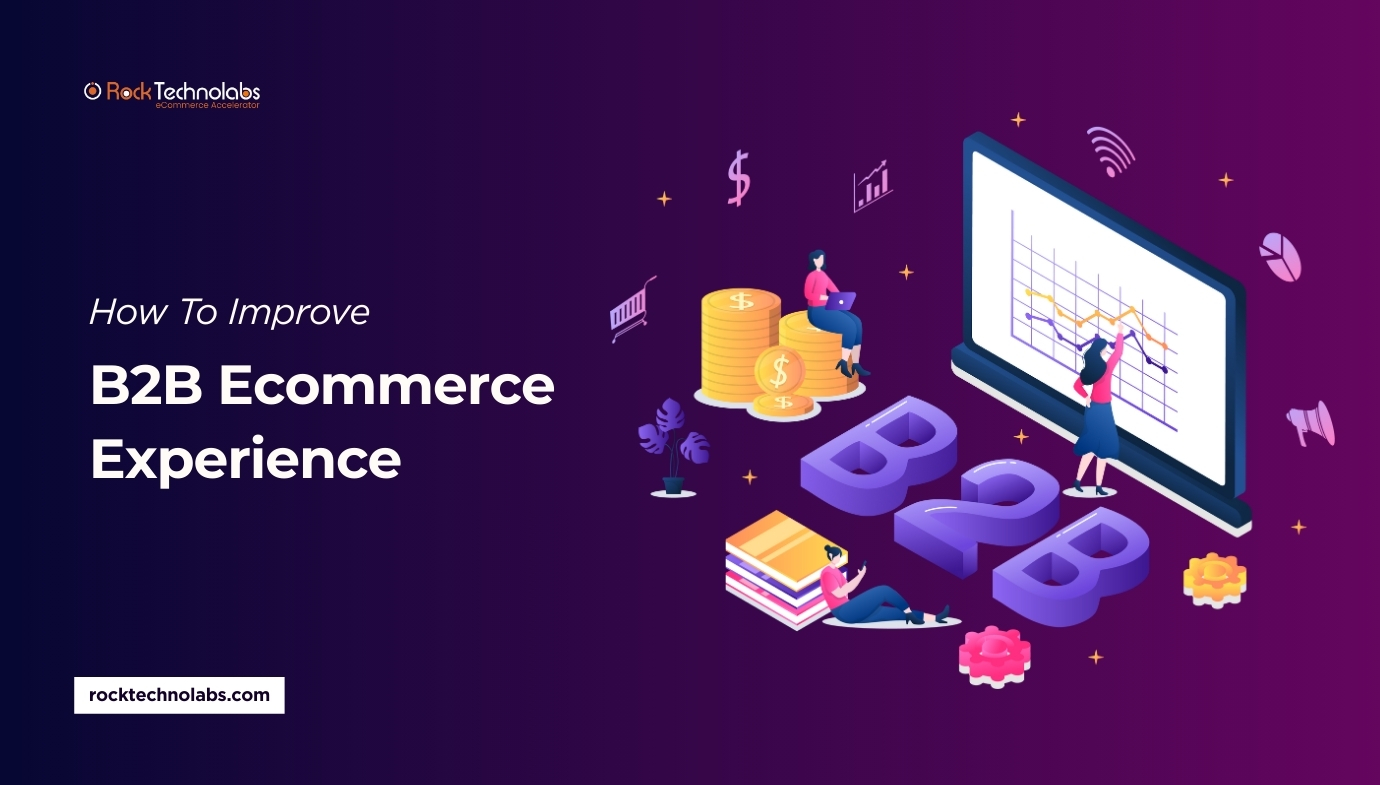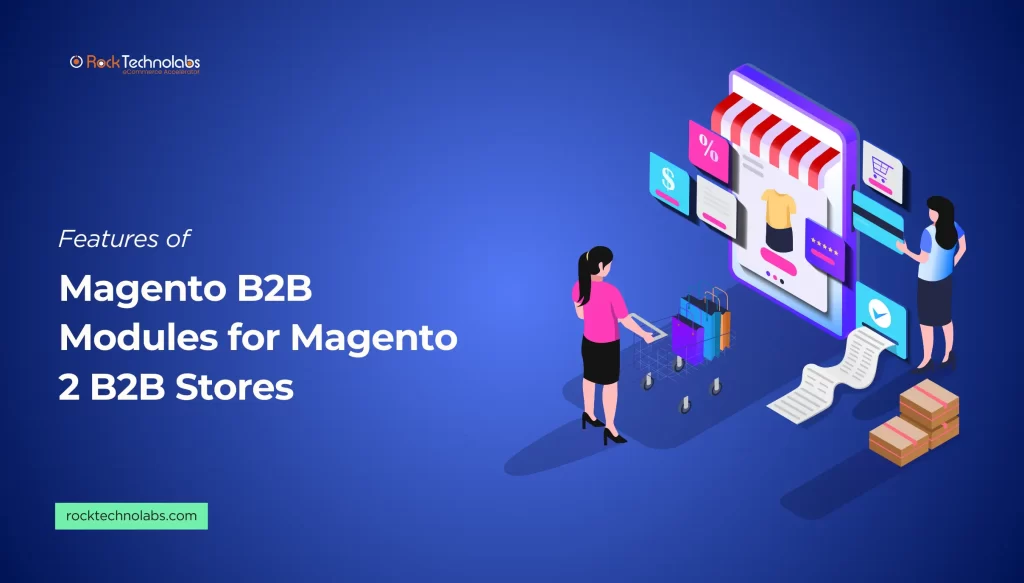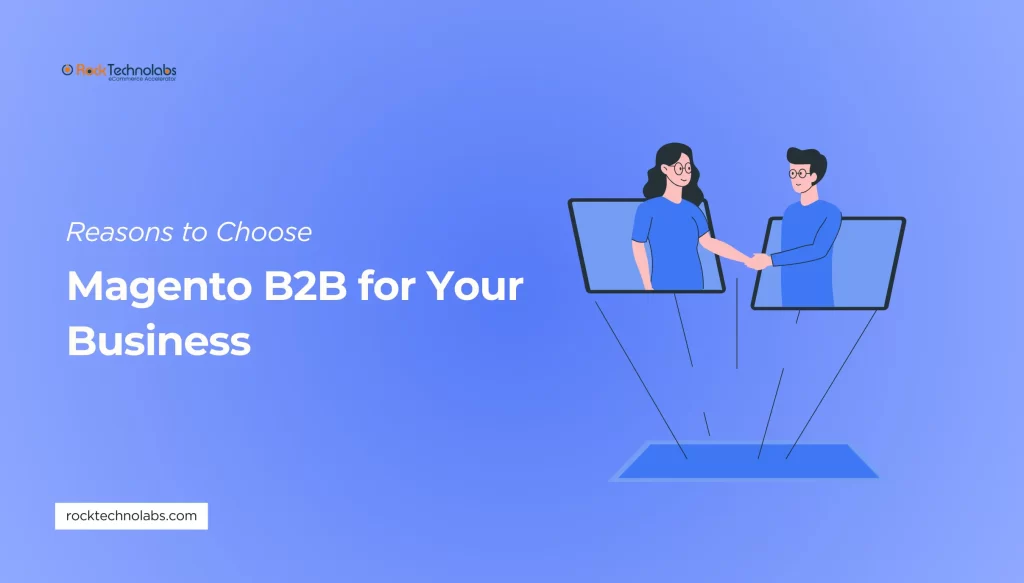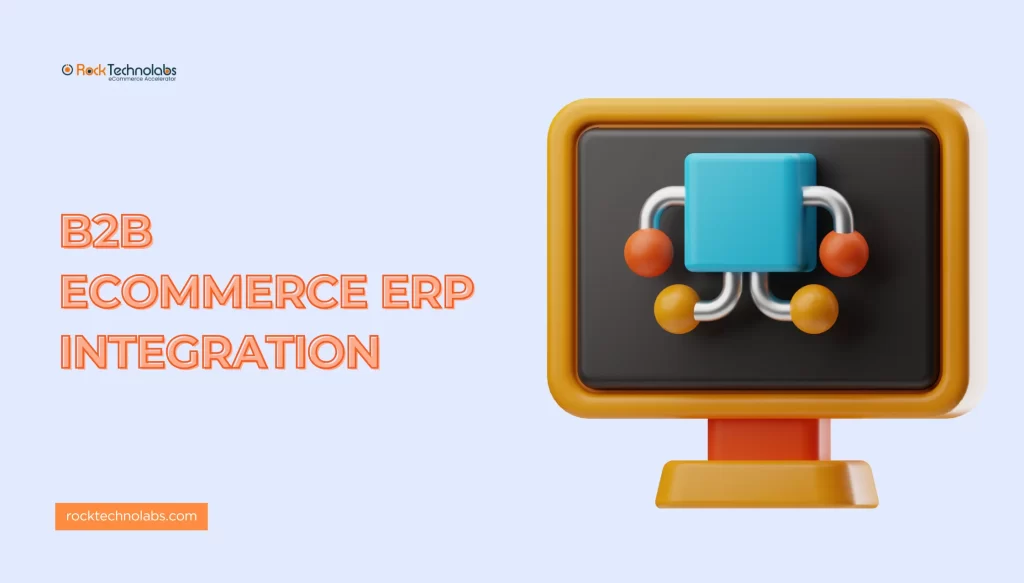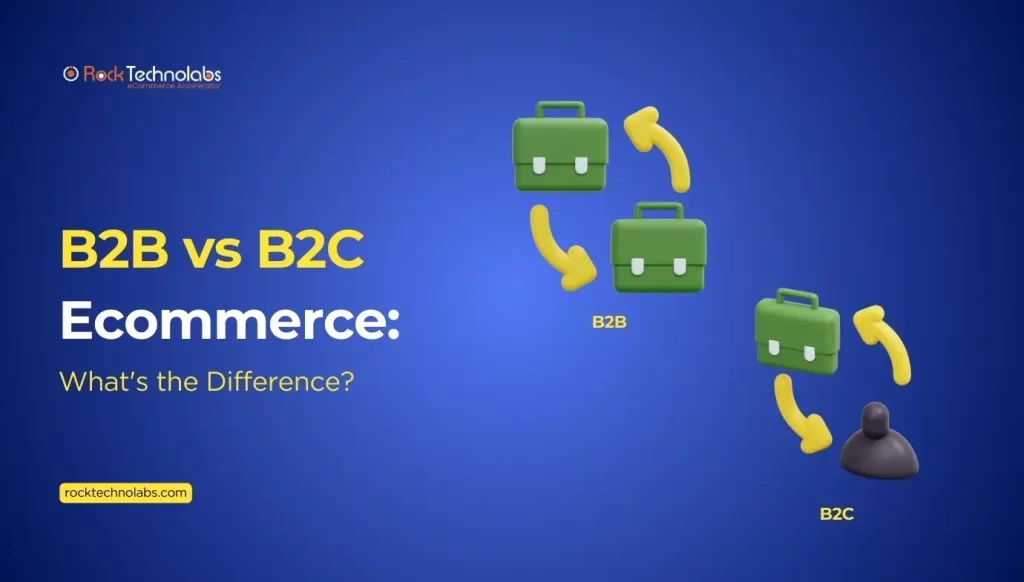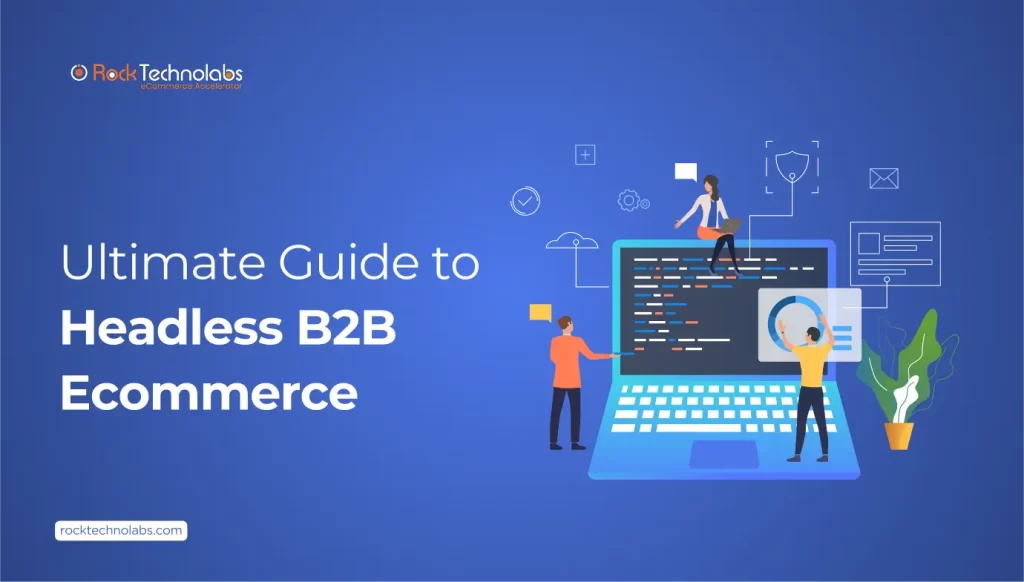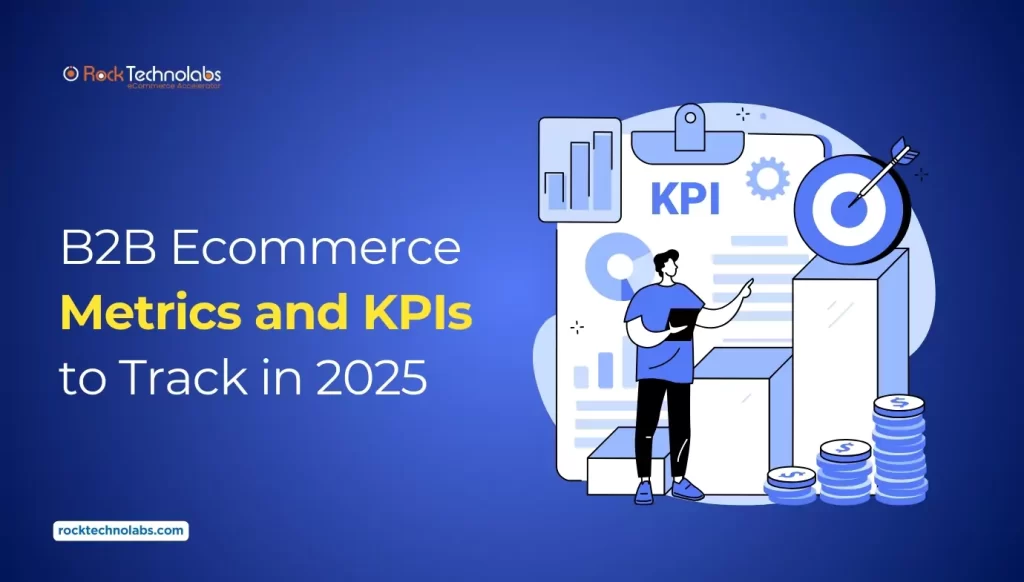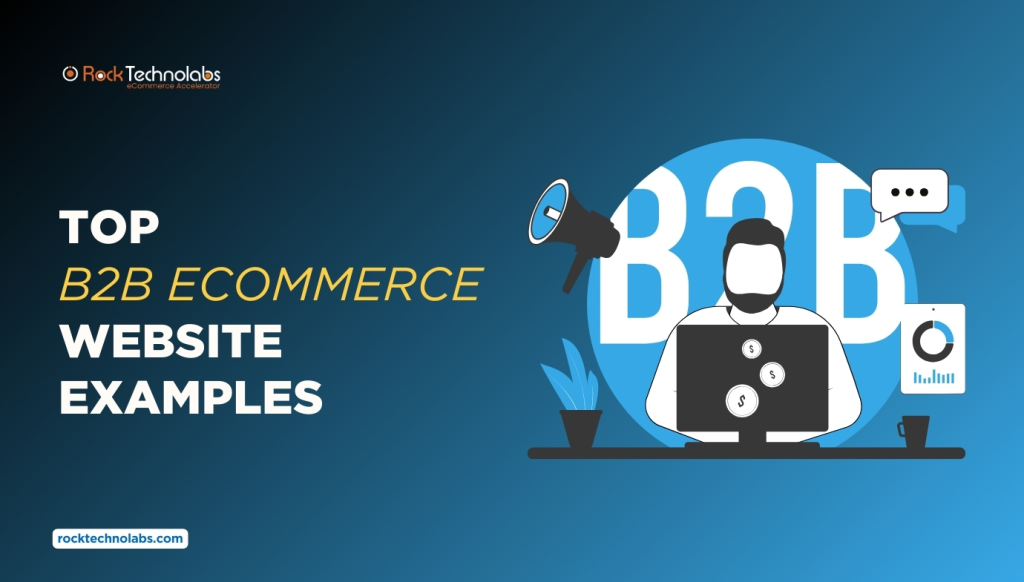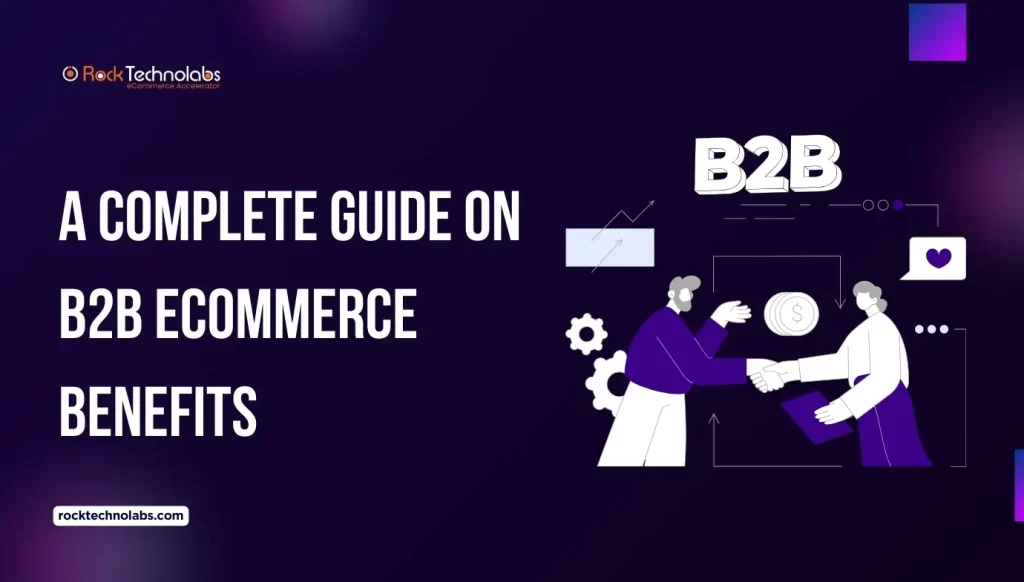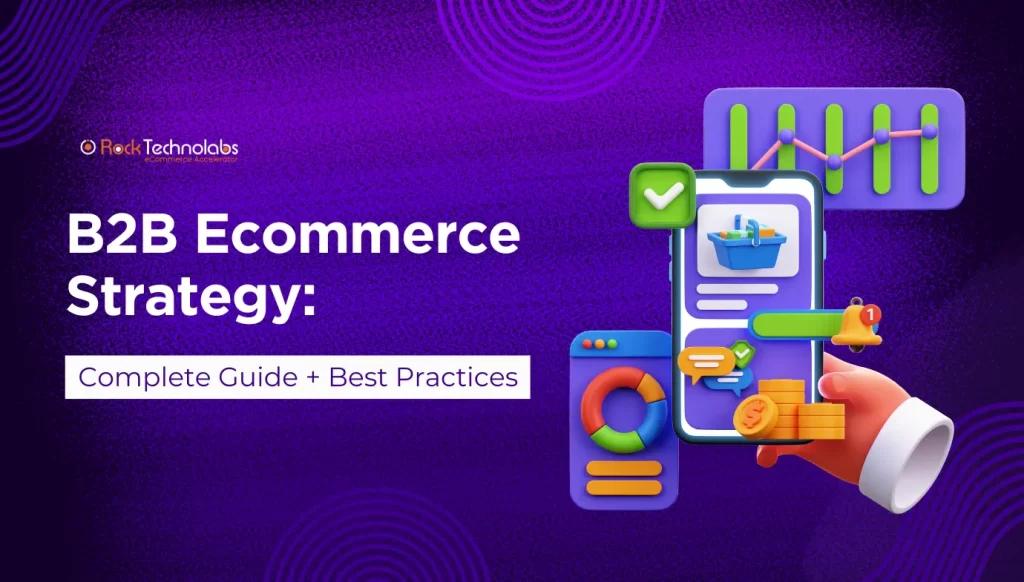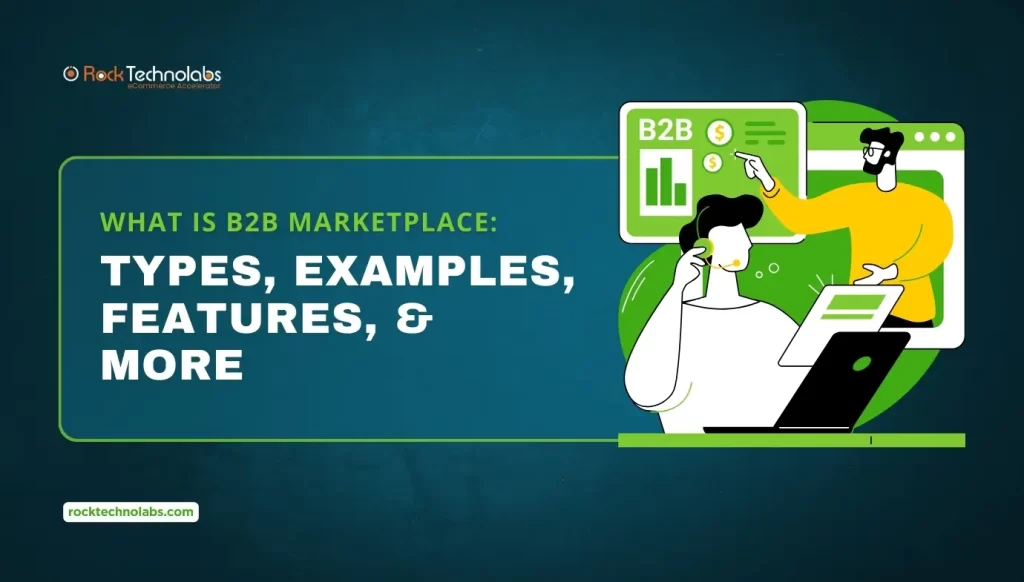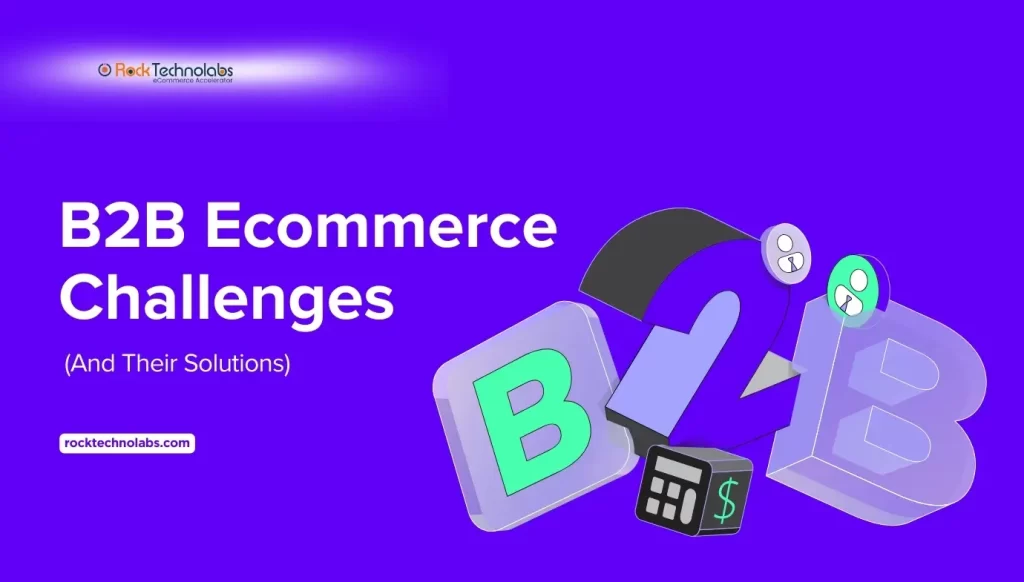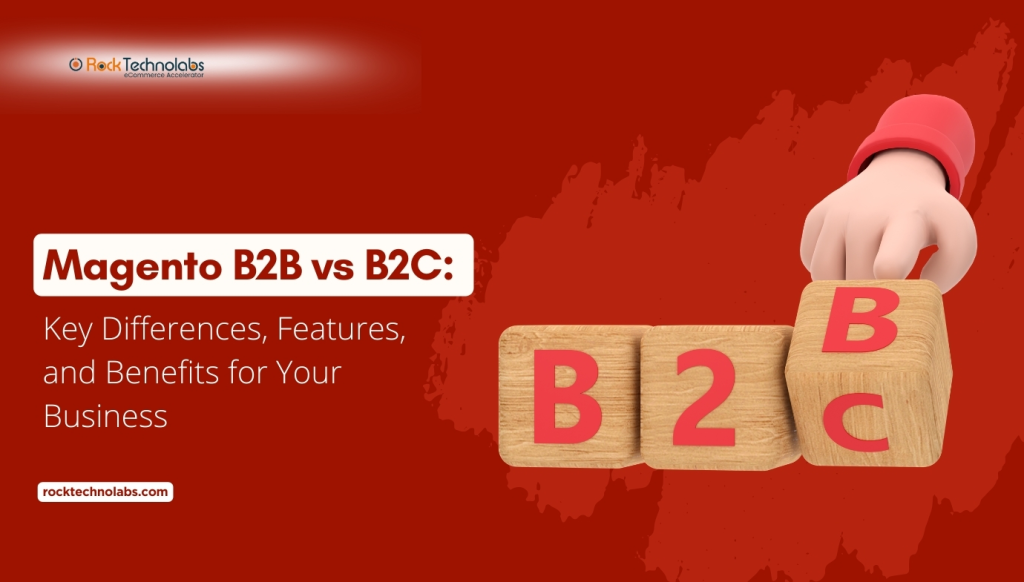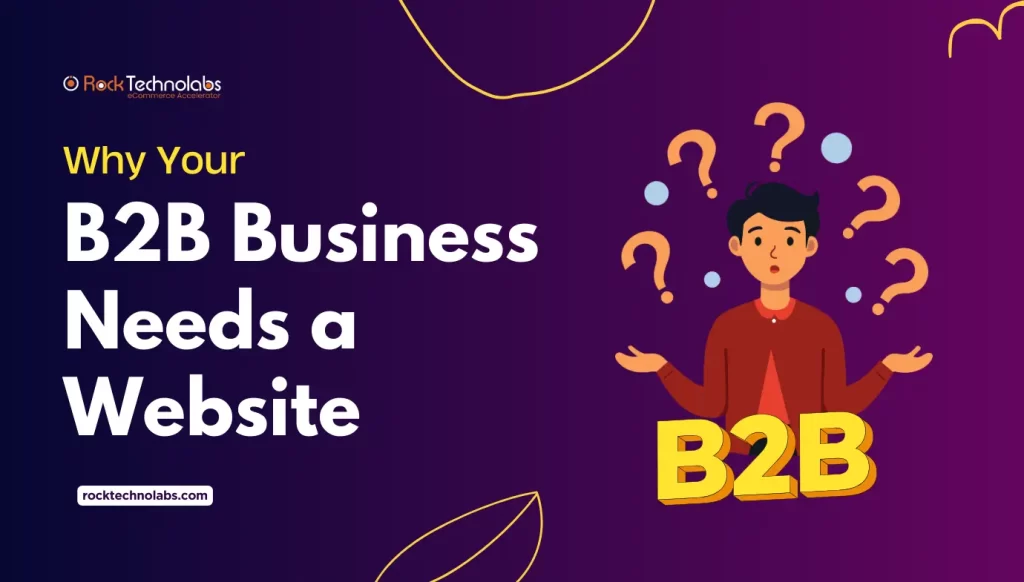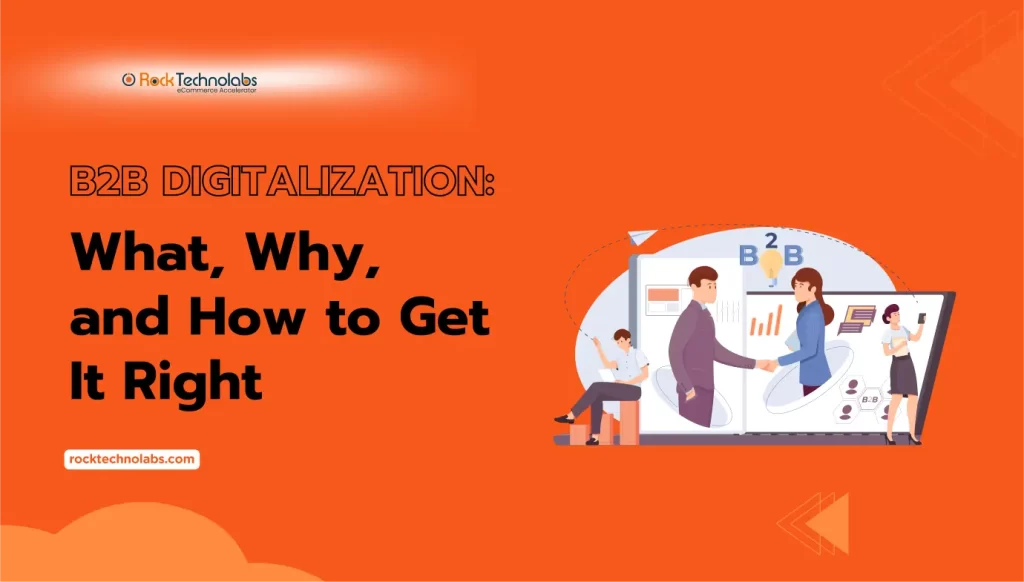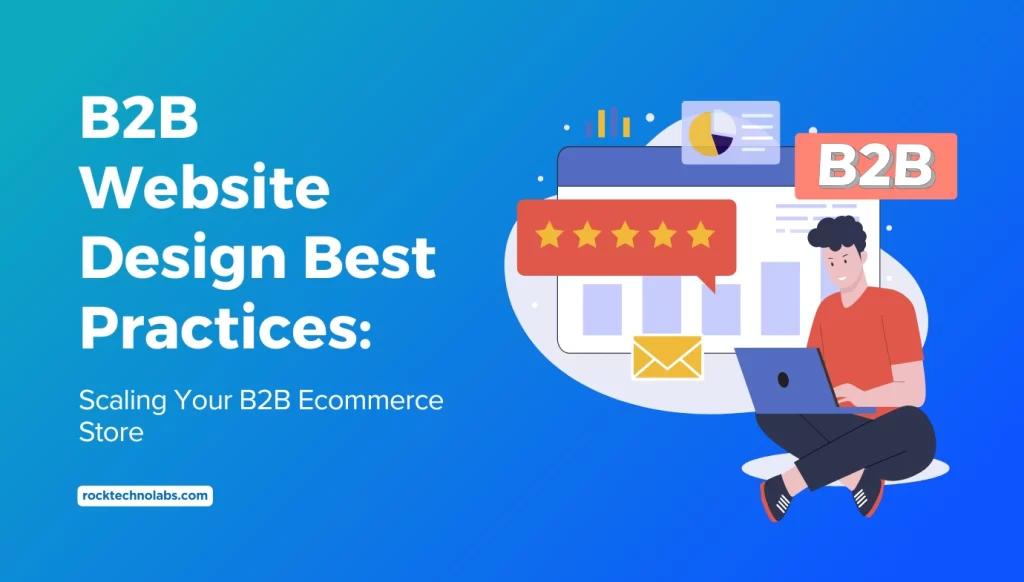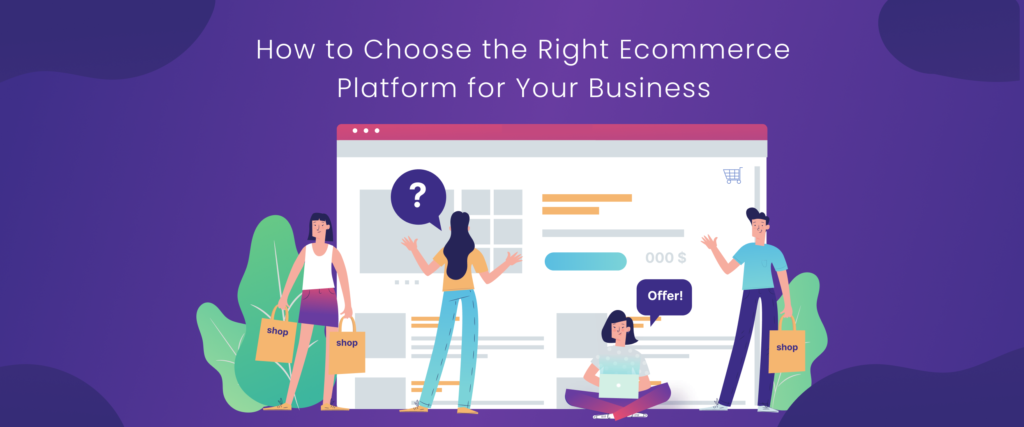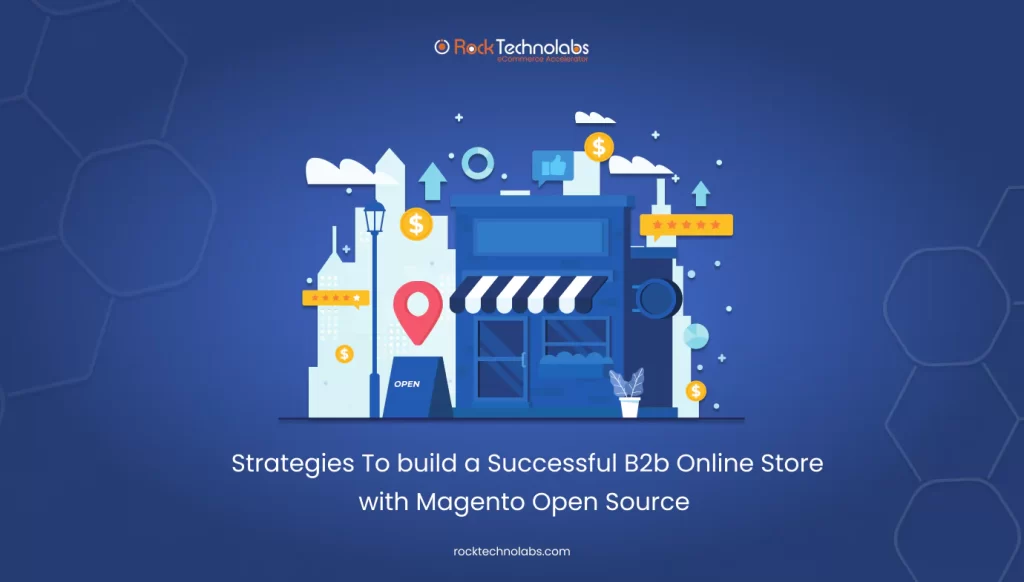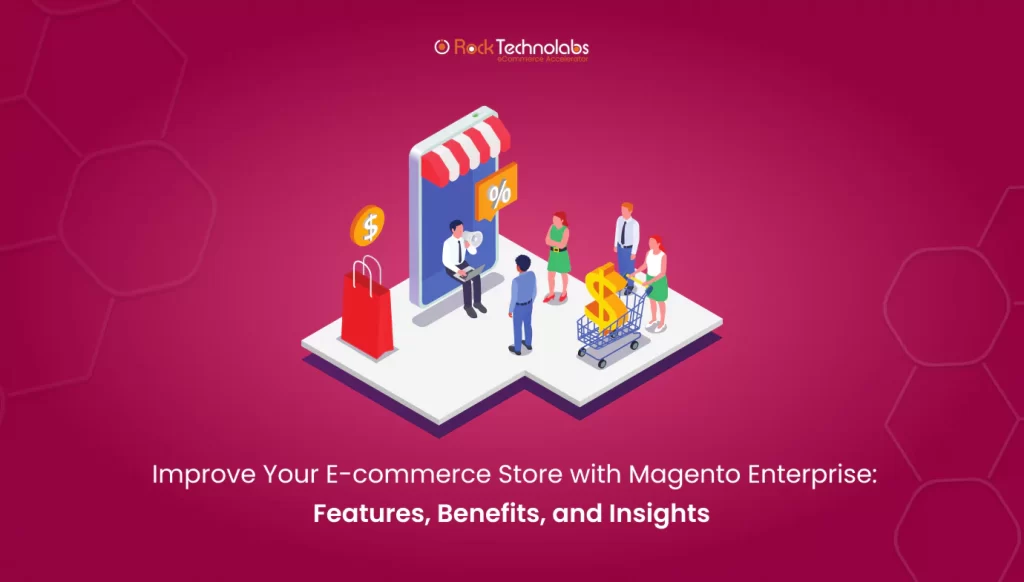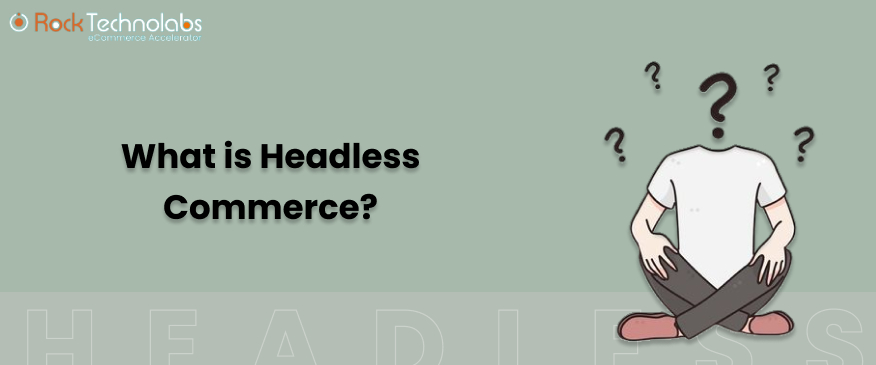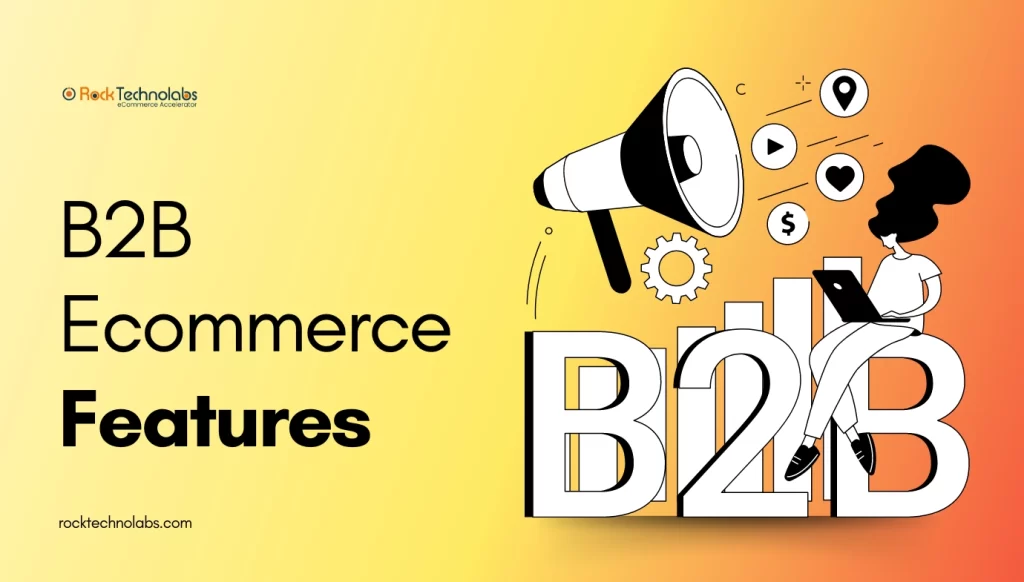The digital transformation of B2B commerce is already underway.
Business buyers today demand the same extent of convenience, speed, and customization that consumers get from online shopping. This means that having an eCommerce website alone is insufficient.
Businesses must focus on providing an excellent B2B ecommerce experience from the first click to the last purchase, and further, if they want to stand out.
Yet, enhancing the B2B digital experience isn’t always simple. The B2B purchasing process is often more complex than the B2C one, numerous decision makers, customized pricing, and large quantities.
To gain and keep clients, it is essential to understand exactly how to create a B2B eCommerce experience that satisfies these particular requirements.
This blog will guide you through improving the B2B eCommerce experience using smart strategies, advanced tools, and user focused design.
We’ll also cover how to build a B2B eCommerce experience from the ground up to help businesses meet modern customer expectations while increasing loyalty and revenue.
14 Tips to Improve B2B eCommerce Experience
1. Understanding the B2B Ecommerce Experience
The B2B ecommerce experience refers to the full digital journey a business customer undergoes on a B2B platform, from product discovery and quotation requests to checkout, post purchase support, and reordering.
Unlike B2C, B2B transactions often involve:
- Bulk ordering and recurring purchases
- Role based access controls
- Custom catalogs and negotiated pricing
- Multilevel approval processes
- Payment terms and invoicing
Improving this experience isn’t just about having a nice looking website.
It’s about optimizing every touchpoint in the buyer journey to align with the complexity and expectations of business clients.
Read More: B2B Vs B2C eCommerce: What’s the Difference?
2. Why Improving B2B Ecommerce Experience Matters
B2B buyers are pressed for time, expect highly personalized experiences, and demand efficiency. According to a McKinsey report:
- 70% of B2B decision makers prefer remote human interactions or digital self service.
- 86% of B2B buyers are willing to pay more for a great customer experience.
Start by examining every element of your platform that interacts with the client, from backend integrations to user interface and UX design, if you’re wondering how to enhance the B2B ecommerce experience.
3. How to Build B2B Ecommerce Experience from Scratch
If you’re just starting your B2B Ecommerce journey, understanding how to build a B2B ecommerce experience from the ground up is necessary. It includes:
a. Identifying Buyer Personas
Create detailed profiles of your B2B buyers. Know their industry, job role, buying power, and purchasing behavior. This helps you deliver targeted experiences.
b. Selecting the Right Platform
Choose a B2B ecommerce platform like Magento, BigCommerce B2B Edition, or Salesforce Commerce Cloud that supports:
- Multi-user accounts
- Custom workflows
- Advanced pricing and quoting engines
c. Setting Up Infrastructure
Ensure scalability with cloud hosting, integrate ERP/CRM systems, and secure your site with HTTPS and PCI DSS compliance.
d. Designing the UX/UI
Prioritize speed, clarity, and functionality. B2B buyers should be able to:
- Search products quickly
- Upload bulk orders via CSV
- Access negotiated terms without logging support tickets
4. Streamline the purchasing process
A smooth purchasing process is critical for B2B buyers. Complex checkout procedures might result in cart abandonment and lost sales. To enhance the purchasing experience:
- Easy Payment Methods: Provide a range of payment choices, such as credit cards, purchase orders.
- Streamline checkout by adding quick order forms, saved shopping carts.
- Transparent Pricing: To prevent surprises, clearly indicate prices, discounts, and taxes.
These tactics eliminate conflict and increase repeat business.
5. Leveraging Personalization
Personalization is no longer optional in B2B eCommerce.
It makes a massive difference. Buyers expect experiences tailored to their needs and preferences. To achieve this:
- Segment Customers: Group users by industry, company size, or buying behavior.
- Offer Targeted Promotions: Provide discounts and offers based on customer segments or purchasing behavior
- Customized Recommendations: Use browsing and purchase history to suggest relevant products
- Offer Personalized Catalogs & Pricing: Display relevant products and discounts based on user roles or past behavior
You can even create dashboards for each Account Manager with Buyer Specific KPIs and History to enable Hyper Personalized Conversations.
By putting these strategies into practice, engagement and sales can be greatly increased.
6. Improving Mobile Experience
With the growing use of mobile devices in B2B transactions, optimizing for mobile is critical.
In fact, 42% of B2B customers currently use mobile devices during the acquisition process. A mobile friendly platform provides accessibility and convenience.
Among the most important factors are:
- Responsive Design: Make sure your website is mobile friendly
- Quick Loading Times: To speed up load times, optimize scripts and graphics.
- Easy Navigation: Make menus and search features simpler to make them easier to use.
- Supports wallet connections and mobile checkout
- Remember mobile specific features like barcode reordering and QR code scanning for inventory management.
7. Integrate ERP, CRM & PIM for Seamless Data Flow
Backend integrations play a pivotal role in enhancing the B2B eCommerce experience.
Connect and sync your ecommerce store with CRM, ERP & PIM systems to:
- Keep inventory and pricing up to date
- Provide account specific experiences
- Offer timely shipping and invoicing updates
- Manage complex product data via a PIM (Product Information Management) system
These integrations are the backbone of automation and accuracy.
8. Integrating Advanced Search and Navigation
Efficient search functionality is vital for B2B buyers to find products quickly.
Advanced search features can enhance user experience and increase conversions. Consider implementing:
- Faceted Search: Allow users to filter results by attributes like price, category, or specifications.
- Auto Suggestions: Provide real time suggestions as users type queries.
- Search Analytics: Monitor search behavior to optimize product listings and keywords.
- Sticky navigation bars and easy category trees
- Saved searches for frequent buyers
Also, use search analytics to learn what your users are typing, and if they’re bouncing due to poor results.
A powerful search system simplifies the buying process and improves satisfaction.
9. Implementing Self Service Portals
Providing self service options to buyers increases productivity.
Businesses may improve operations and decrease support inquiries by making information and tools accessible.
Features to think about:
- Order management: Give clients the ability to monitor past orders, track shipping, and manage returns.
- Account management: Give users the ability to change their preferences, payment methods, and profiles.
- Manage reorders and subscriptions
- Update user permissions
A robust self service portal can significantly improve the B2B ecommerce experience.
Read More: Top 10 Must-Have B2B Ecommerce Features
10. Prioritizing Site Performance and Security
Customer trust and retention are significantly impacted by the performance and security of websites.
Potential customers may be turned off by slow loading pages and security issues.
To deal with these problems:
- Enhance Loading Times: Reduce the number of HTTP queries and make use of content delivery networks.
- Assure the security of your data: Adhere to data protection laws and put SSL certificates into use.
- Regular Maintenance: Conduct routine checks and updates to prevent any risk.
Investing in performance and security builds credibility and encourages repeat business.
Further Reading: Why Your B2B Business Needs a Website
11. Offering Flexible Pricing and Payment Options
B2B transactions frequently involve complex payment and pricing terms.
Diverse client needs can be met by offering flexibility. Some strategies are:
- Tiered Pricing: Provide discounts according on client loyalty or order volume.
- Negotiated Rates: Allow custom pricing for some customers.
- Various Payment Options: Accept a range of payment methods, such as purchase orders and credit cards.
Price and payment flexibility can improve client relations and increase revenue.
Recommended Read: B2B Ecommerce Strategy: Complete Guide + Best Practices
12. Measure, Analyze & Optimize
The B2B ecommerce experience must be filtered using data driven insights.
Businesses can make well informed decisions by examining sales patterns and customer behavior.
Key metrics to monitor:
- Conversion Rates: Track the percentage of visitors completing purchases.
- Customer Retention: Measure repeat purchase rates and customer loyalty.
- Cart Abandonment: Identify stages where customers drop off and implement remedies.
Regularly reviewing analytics enables continuous optimization of the ecommerce platform.
13. Invest in Content, Trust Signals, and Education
Today’s B2B buyers conduct 70% of their research online before even contacting a sales rep. Offer value through:
- Product spec sheets, comparison charts, and demos
- Case studies and white papers
- Trust badges, certifications, and testimonials
- Live chat and video walkthroughs
This content not only builds credibility but also empowers buyers to make decisions faster.
14. Provide Real Time Support & Post Sale Experience
Exceptional post sale support retains customers.
Offer:
- Live chat support
- Service ticket management
- Feedback loops
Always follow up post sales with personalized emails, helpful guides, etc. Long term loyalty comes from great after sales experiences.
Conclusion
Enhancing the B2B ecommerce experience requires more than simply faster loading times or better designs; it also demands knowing your customers, predicting their needs, and creating a digital experience that is easy to use, efficient, and personalized.
Every enhancement you make, from self service portals and ERP connectors to customized catalogs and speeding up ordering, can have a direct effect on client retention, happiness, and revenue growth.
The first step in creating a B2B ecommerce experience that appeals to today’s market is to concentrate on the three things that your clients value most: control, transparency, and ease.
And now is the moment to make investments in technologies and methods that not just meet but surpass expectations if you’re prepared to move forward with your digital transformation.
Remember, in B2B, strong relationships are everything, and a seamless online experience is the new handshake.


